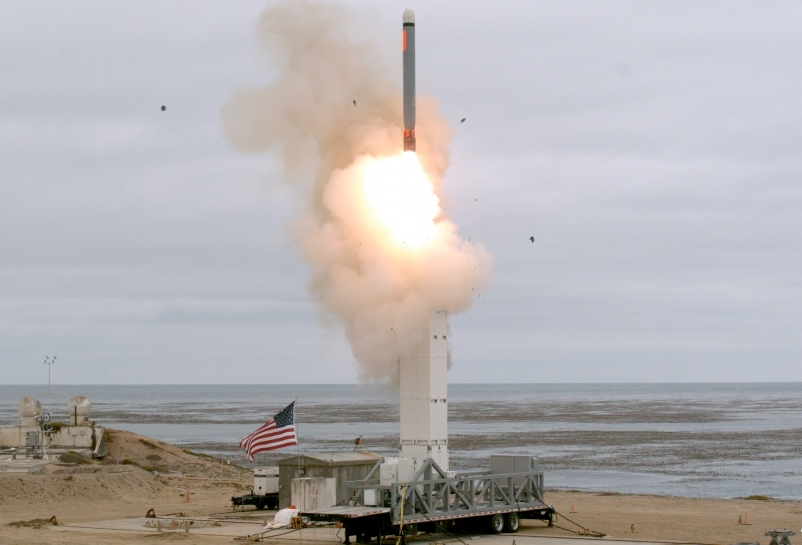Just two weeks after the United States and Russia ripped up a landmark arms treaty that greatly reduced the nuclear arsenals of both superpowers and eliminated an entire category of missiles, the Pentagon on Sunday test-fired a previously banned mid-range missile from San Nicolas Island off the coast of Ventura. Slow-motion video footage shows the Tomahawk cruise missile emerging from its mobile launch platform before speeding 300 miles over the ocean and hitting an undisclosed target. “Data collected and lessons learned from this test will inform the Department of Defense’s development of future intermediate-range capabilities,” the Pentagon said in a press statement.
President Ronald Reagan and Soviet Union leader Mikhail Gorbachev signed the Intermediate-Range Nuclear Forces (INF) Treaty in 1987. It focused on missiles with ranges between 310 and 3,420 miles, the kind that had caused widespread panic during the Cold War because of their ability to be driven on a mobile platform into a remote area and launched within minutes. The treaty forced the countries to scrap more than 2,700 missiles and was an effective deterrent to what was becoming an escalating arms race. In more recent years, however, both countries have accused the other of violating the INF, culminating in an August 2 decision by President Donald Trump to terminate the agreement.
Rick Wayman, deputy director of the Nuclear Age Peace Foundation in Santa Barbara, echoed the fear by many analysts that the loss of the INF treaty could spark a new game of nuclear chicken. “Yesterday, I spent a peaceful, beautiful afternoon at the beach in Santa Barbara, celebrating a friend’s birthday,” Wayman said on Monday. “I was appalled to learn that, just miles from our family’s tranquil celebration, the U.S. took a dangerous and ill-advised leap forward in its arms race with Russia. There was good reason why these weapons were banned for 32 years and should have remained banned forever.”

